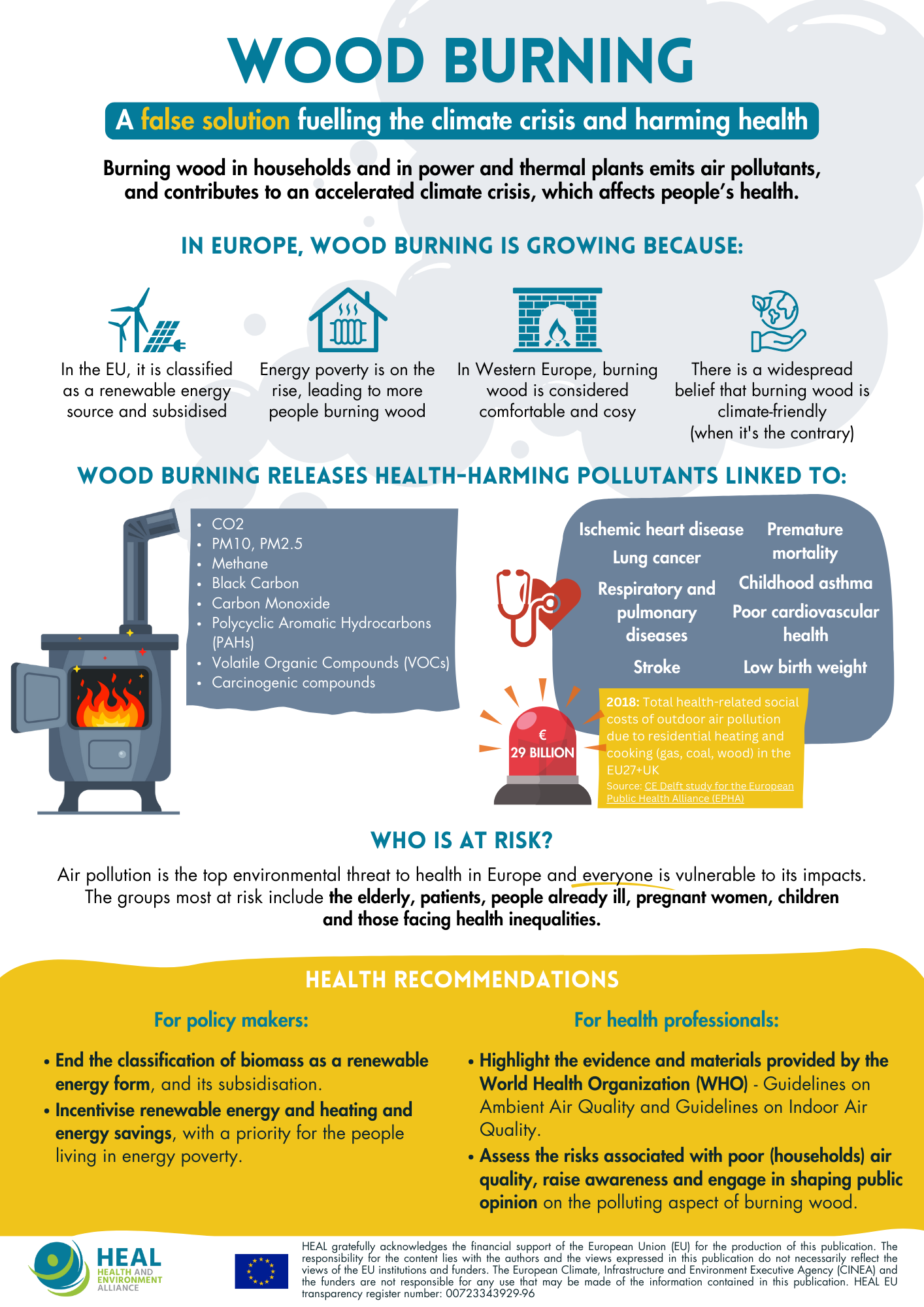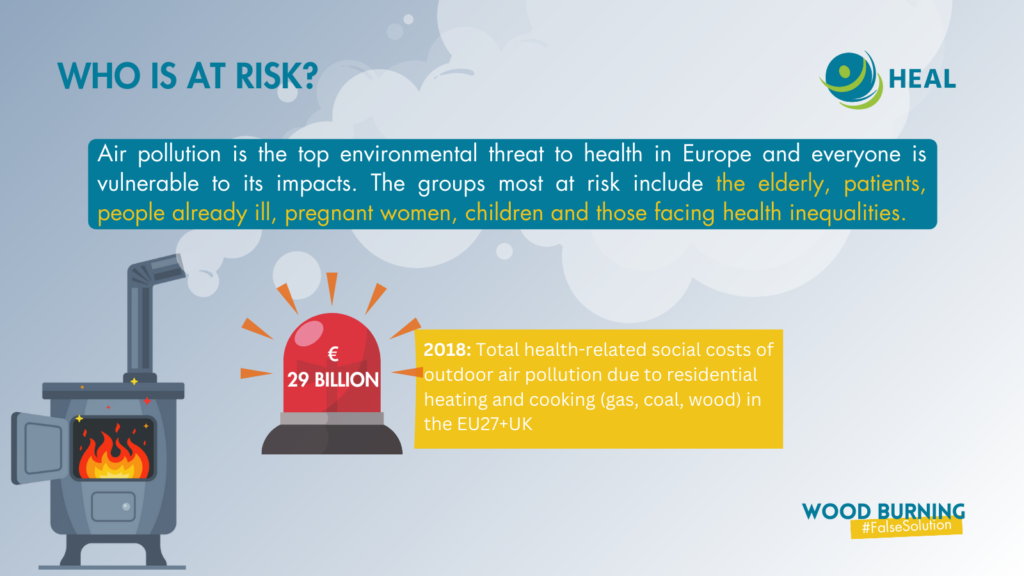Press note: The Forever Lobbying Project investigation finds that the clean-up of per- and polyfluoroalkyl substances (PFAS) contamination in Europe could cost 100 billion euros annually. Health-related costs for PFAS exposure are estimated to reach up to 84 billion euros annually. With these revelations, combined with the mounting scientific evidence on PFAS’ grave health impacts, it is clear that the European Commission must ensure a robust EU-wide PFAS restriction and come up with a plan to address these costs as part of the Clean Industrial Deal.
A new infographic entitled “Wood burning: a false solution fuelling the climate crisis and harming health” examines how burning wood in households, and power and thermal plants contributes to air pollution and accelerates the climate crisis, both of which affect people’s health.
In Europe, wood burning is growing for several reasons:
- In the European Union, it is classified as a renewable energy source and subsidised.
- Energy poverty is on the rise, leading to more people burning wood.
- In Western Europe, burning wood is considered comfortable and cosy.
- There is a widespread belief that burning wood is climate-friendly (when it’s the contrary).
Burning wood emits harmful air pollutants such as carbon dioxide (CO2), a primary greenhouse gas responsible for the increase of global heating, particulate matter (PM10, PM2.5), methane (CH4), black carbon (BC), carbon monoxide (CO), polycyclic aromatic hydrocarbons (PAHs), volatile organic compounds (VOCs), and other carcinogenic compounds.
Air pollution from wood burning is linked to:
- Premature mortality, low birth weight, childhood asthma, poor cardiovascular health, respiratory diseases, chronic obstructive pulmonary disease (COPD), ischemic heart disease, stroke, and lung cancer.
- In 2018, using gas, coal, and wood for residential heating and cooking in the EU27+UK led to a health-related social costs of 29 billion Euros, due to outdoor air pollution.
Air pollution is the top environmental threat to health in Europe and everyone is vulnerable to its impacts.
People’s level of vulnerability is outside of individual control, and it evolves with age, health condition, socio-economic status, as well as where people live, study or work. The groups most at risk include the elderly, patients, people who are already ill, pregnant women, children, and those facing health inequalities.
HEAL’s message is clear:
- The EU must end the classification of biomass as a renewable energy form, and its subsidisation.
- Policy makers need to incentivise renewable energy and heating and energy savings, with a priority for the people living in energy poverty.
- Health professionals can also contribute to greater awareness on the health and climate threat from wood burning, by:
- Engaging in shaping public opinion and awareness on the polluting aspect of burning wood, fossil fuels, and providing guidance on reducing exposure.
- Highlighting the evidence and materials provided by the World Health Organization (WHO) – Guidelines on Ambient Air Quality and Guidelines on Indoor Air Quality.
Download the infographic here.








